Ieri am publicat un clip video in care va spuneam ca Samsung Galaxy Note7 se zgarie usor, iar testul avea la baza un test facut de catre un reviewer al YouTube. In test ni s-a demonstrat ca panoul de protectie Gorilla Glass 5 nu este chiar atat de rezistent la zgarieturi precum sustine Corning, iar compania americana a reactionat.
Pentru a zgaria panoul de protectie al ecranului Samsung Galaxy Note7, persoana a folosit diverse tipuri de metal care aveau diferite grade de duritate pe scara Mohs, iar in mod surprinzator, unul cu duritate de gradul 3 a reusit sa zgarie ecranul, desi acesta este prezentat ca avand o rezistenta pana la gradul de duritate 5 – 6.
In fata unui asemenea rezultat, cei de la Corning au reactionat, iar conform lor, acele obiect de metal folosit in incercarea de a zgaria ecranul Galaxy Note7 s-a dezintegrat pe suprafata panoului de protectie, iar ceea ce vedem noi in imagini este in realizate reziduul de metal ramas pe suprafata si nu o zgariere.
Samsung Galaxy Note7 nu se zgarie usor, conform Corning
Vorbim aici despre metalul care are un grad de duritate de pana in 5 pe scara Mohs, cei de la Corning spunand ca panoul de protectie este mai rezistent decat ele. In aceasta idee, o persoana care nu stie cum se face transferul de material intre suprafete ar putea considera acele urme drept zgarieturi, cand ele in realitate nu reprezinta asta.
Cei de la Corning au oferit explicatii ample pentru motivul in baza caruia ecranul Samsung Galaxy Note7 pare sa se zgarie atat de usor. Conform lor, totul are legatura cu transferul de material de pe metal pe panoul de protectie, care ar fi mai dur decat el, insa urmele raman acolo fara a putea fi sterse, chiar daca teoretic nu sunt zgaruetiri.
Cei de la Corning sustin ca Gorilla Glass 5 este la fel de rezistent pa zgarieturi precum Gorilla Glass 4, insa lumea va ramane cu multe intrebari. Chiar daca vorbim doar despre transfer de material, utilizatorii vor vedea oricum urme care seamana cu zgarieturi, iar aceste explicatii nu-i vor multumi vreodata.
Voi credeti explicatiile celor de la Corning si ati fi multumiti cu ele daca ecranul smartphone-ului vostru ar fi zgariat ?
„The hardness pick that was used in the video was a 3, that’s considerably softer than the glass material. Oftentimes when you have a softer material like that, and depending on what kind of loads you have used, you tend to see material transfer on the test substrate.
Material transfer on the test substrate is not necessarily a scratch but it can appear to the untrained eye as a pretty visible scratch. We don’t know whether or not that is what is being seen in the video. Certainly in the testing we’ve done internally, we don’t see that issue at all with similar picks on the Mohs hardness scale.
We have conducted controlled pick hardness tests on GG5 and we have demonstrated that this material transfer phenomena can occur. It is characteristic of the lower pick hardnesses during the tests.
It’s a function of the difference in the hardness of the materials, but in particular the load is very important. So you could have a lower hardness pick with a much higher load and still achieve a condition that would look like a slightly higher hardness pick with a lighter load. It’s a combination of pressure and material hardness differences that exist between the pick and the material that’s being contacted.
The glass is designed to improve the drop performance and not necessarily designed to improve the scratch performance. When we consider all hardness tests, GG5 is actually harder than GG4. Based on our testing, for scratch performance as well as the hardness testing we do that’s widely used in the industry, we believe that GG5 should be performing similarly to GG4.
There might be a misconception in the thought process [about shock absorbency and flexibility]. What we’ve done with GG5 is designed to maximize the damage resistance of the glass itself. What that does is provide additional resistance to the flaws that get introduced during drop events and provide additional retained strength during those drop events so you can have higher drop performance.
That’s slightly different than thinking about it from a shock absorbance or flexibility perspective. It’s actually more about preventing flaws in glass, which is a brittle material, not about making a soft, shock absorbing material.”



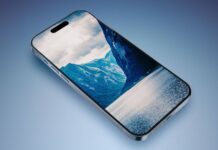

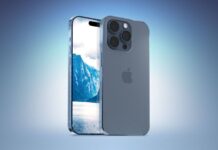
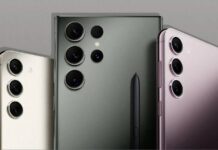
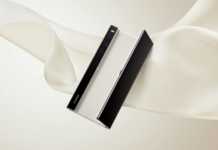
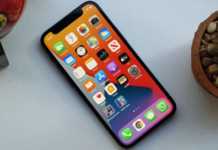
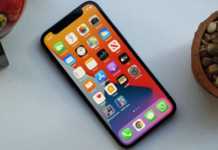
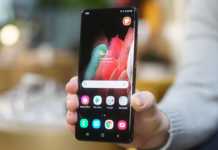

















Cei ce simt nevoia sa explice public sunt cei ce se simt vinovati
Si samsung a simtit nevoia sa zica ca note 7 vine cu jack pt ca stiu si ei ca pe viitor vor renunta la acest port.
Omul din videoclipul acela explica clar ca acelasi lucru a crezut si el, ca urmele pana la gradul 5-6 se vor sterge. Chiar incearca sa stearga suprafata ecranului si nu reuseste. Deci explicatiile celor de la Corning sunt total penibile.
ALELUIA
Ce explicații de doi lei! Si cand se sparge ecranul de asfalt,defapt nu sunt crăpături in ecran,sunt reziduuri din betonul dezintegrat din asfalt in acele crăpături!
yea baby…sunt explicatii tipice cam cum mai da si cineva pe aici…incearca sa ne minta prin nu stiu ce inventii si „cuvinte mari”
@Amfetamin, partea pozitiva e ca se sparge mult mai greu ca vechile tehnologii sau ca alte telefoane.. :-„
Asa este,dar e mult mai probabil sa-l zgarii in utilizarea zilnică decât sa-l scapi pe jos.
Ce s-o mai dam la intoarsa,si 6 plus se îndoaie poate sa zică Tim Cuc ce o vrea,4-le pierdea semnal grav daca „nu-l țineai cum trebuie”. Toate astea sunt adevăruri de necontestat,asa si cu asta cu GG5. Ciudat e însă ca e mai slab la zgârieturi decât GG4. Dar de ce nu zice Corning si cum se îndepărtează acele „reziduuri”??
mai bine taceau
Ca altii incearca sa isi ascunda minciunile prin ceva sf
Deci se zgaraie mai usor ca note 5, are baterie mai mica ca s7 edge, vitezele pt storage sunt mai slabe
Polish pt telefoane ???
Trebuiesc făcute mai multe teste. Cu o floare nu se face primăvară ?
Polish :))). Asa dispar si zgarieturile de pe AW Stainless Steel .
Clar k nu dar cu o folie de protectie ai terminat povestea!:p
Oricum toți aveți folie de protecție pr telefon :)))